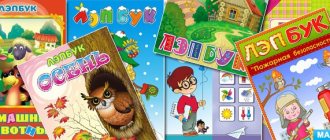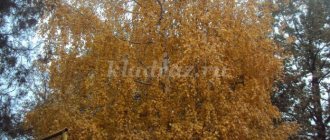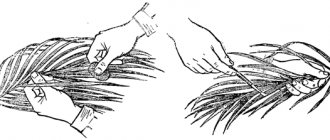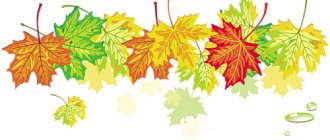Didactic game "Seasons"
The middle group plays, preschoolers 4-5 years old.
The purpose of the didactic game “Seasons” is to form and consolidate knowledge about the sequential change of seasons, instilling a respectful attitude towards nature.
The activity helps preschoolers:
- remember the seasons of the year and the sequence of their alternation;
- correctly identify visual seasonal signs;
- consolidate ideas about the features of the 4 calendar times;
- develop observation, visual memory, ability to concentrate, speech skills;
- cultivate love in nature, a caring attitude towards its objects;
- see natural beauty in all seasons.
For the game, you need to prepare 4 illustrations depicting the same landscape in different seasons, cut out cards with depicted signs, objects and phenomena of each season.
Children look at pictures of seasonal landscapes. The teacher shows the cards one after another, and the students choose images that correspond to the selected illustrations of the seasons, name what is depicted, and explain the choice. The first participant to choose the correct cards without errors wins.
For older groups, the game can be complicated.
To make it more difficult, the teacher himself lays out the cards according to the pictures of landscapes, but incorrectly. The children's task is to move the cards to the appropriate seasons.
DIY educational toys for children
Another very unusual toy that you can make with your own hands if you print ready-made templates. You are all familiar with pictures that change their image from different angles. So in this game, accordions made from ready-made templates with images of the seasons can change depending on the viewing angle.
Print out the finished templates, then use pencils or markers to color them and fold them into neat accordions.
Believe me, your baby will be very surprised when in a second the image before his eyes changes to something completely different. Meanwhile, an adult should talk about how the seasons change and what happens in nature.
Game "4 seasons and 12 months"
Kindergarteners aged 3-4 years play, that is, the younger group.
Game objectives:
- teach the relationship between calendar times and a certain palette;
- develop mathematical skills - the ability to count to 4 and 12, divide geometric shapes into equal parts, name the months sequentially;
- develop memory, ability to concentrate and think logically.
For the lesson, you need to make a circle, divide it into 4 equal parts, paint each part with a color corresponding to the season: blue - winter, green - spring, yellow - summer, red - autumn. Children must guess which season each part of the circle belongs to and tell why this color was chosen.
For the middle age group, the task is made more complicated; each season of the circle is divided into 3 months.
"Seasons" for older preschoolers
For a preparatory group of preschoolers, you can play a game using computer technology. The teacher needs to prepare slides depicting pictures-answers to questions and riddles. From the presented pictures, children must choose the correct ones and click on them with a computer mouse.
The goal of the game is to form ideas about seasonal changes in nature and develop cognitive abilities through the use of computer technology.
Objectives of the didactic game “Seasons”:
- formation of ideas about the world around us, about the relationship between the changing seasons and objects of living nature and humans;
- consolidation of knowledge about the signs of spring, summer, autumn, winter;
- consolidation of knowledge about deciduous trees, hibernating animals, migratory birds;
- developing the ability to answer questions, solve riddles, speak competently and consistently;
- increase in cognitive activity;
- development of speech skills, increase in vocabulary;
- development of memory, hearing and vision perception, finger motor skills, ability to concentrate, and think logically.
The first group of slides concerns autumn. The teacher asks a riddle, the children guess what season is depicted. Next, the teacher asks questions: by what signs did the pupils identify autumn, what color are the leaves on the trees, what clothes are the people in the picture wearing, why are they dressed that way. The next slide shows autumn leaves, children must name which tree they came from.
The second group of slides concerns winter, children guess the riddle, tell how they identified winter, how people are dressed. On the second slide, from the animals presented, those that hibernate are selected. In the third of the presented pictures, choose the correct answers to riddles about a snowflake, a snowman, snowfall, frost, frost, icicles.
Next, preschoolers look at spring, guess the riddle, explain the choice of pictures, and tell how people are dressed. On the second slide, choose migratory birds from among the depicted birds. In the third of the presented images, choose answers to riddles about snowdrops, the sun, grass, streams, drops, rooks.
Next, the children look at summer, give an answer to the riddle, explain the choice of the picture, and explain why the people in it are lightly dressed. On the second slide, count the number of butterflies in forward and reverse order. At the third stage, edible mushrooms are selected from the presented mushrooms.
At the end of the game, the teacher asks the children to draw their favorite season.
LiveInternetLiveInternet
3. E. AGRANOVICH
SEASONS
Visual and didactic aid for classes on speech development with preschoolers using flannelgraph Artist E. M. Vorobyova Agranovich 3. E.
A251 Seasons.
A visual didactic guide for classes on speech development with preschoolers using a flannelgraph / Hood. EAT. Vorobyov. - SPb.: DETSTVO-PRESS, 2003. - 8 p. on 18ВМ 5-89814-102-2 The manual includes methodological recommendations with a selection of riddles about the seasons and four color plot paintings (samples) on this topic, as well as 8 sheets of cut material for flannelgraph. It is recommended for classes on speech development (composing descriptive and comparative stories) with children of middle and senior preschool age in preschool educational institutions - mass and compensatory type - as well as for individual home activities and games with children. Such activities will help expand and clarify preschoolers’ ideas about the seasons, seasonal changes occurring in living and inanimate nature, and will help to intensify speech activity. UDC 376.3 373.2 BBK74.3 74.102ya St. Petersburg: < CHILDHOOD-PRESS "2003 ^ METHODOLOGICAL RECOMMENDATIONS
The proposed manual is recommended for classes on speech development (composing descriptive and comparative stories) with children of middle and senior preschool age in preschool educational institutions - as mass , and compensating type. We also advise parents to use it in individual lessons and games with children. Such activities will help clarify and expand preschoolers’ ideas about the seasons, seasonal changes occurring in living and inanimate nature, and the development of coherent speech. The manual includes real methodological recommendations with a selection of riddles about the seasons and four color plot paintings (samples) on this topic, as well as 8 sheets of cut material for flannelgraph. Teaching a child to tell means forming his coherent speech. This task is included as a component of the general task of speech development in preschool children. The child’s speech develops in unity with the formation of thinking. Middle and especially senior preschool age is a period of significant changes in thinking: the child’s horizons expand, mental operations improve, new knowledge and skills emerge; the child begins to become more deeply aware of the connections between various phenomena and objects of the surrounding world, which also affects his speech - speech becomes more coherent. Scientists have found that in preschool age children more easily master the correct construction of individual sentences, but experience significant difficulties in mastering various forms of connection and coordination of phrases and parts of a story. A 4-5 year old child, without finishing one part of the statement, can move on to another, with completely new content; semantic connections between phrases in his speech are either weakly expressed or completely absent. Although children, in general, successfully convey the spatial and temporal sequence of events, which determines the combination of individual phrases into a whole statement, the ability to reflect various types of connections in stories, to highlight and explain the mutual dependence of objects and phenomena must be purposefully developed in them. At the same time, it is important to teach the child to structure his speech in such a way that it is understandable to the listener, that is, to cultivate a listener orientation. At preschool age, children are just beginning to master monologue speech, so they need timely help from adults, their advice and guidance. By teaching a child to tell a story, that is, to independently present his thoughts in a coherent and consistent manner, the teacher helps him find the exact words and phrases, construct sentences correctly, logically connect them with each other, and observe pronunciation standards. Completing storytelling tasks by preschoolers intensifies the process of mastering linguistic means and contributes to the improvement of all aspects of speech - lexical, grammatical, phonetic. The greatest difficulties in learning coherent monologue speech are caused by preschoolers with speech pathology (general speech underdevelopment, delayed speech development of various etiologies). Monologue speech of this category of children is characterized by a number of typical shortcomings: poverty of vocabulary (small number of generalizing concepts, predominance of verbs and nouns and insufficient number of adjectives and adverbs); inaccurate understanding of the meanings of words and incorrect use of words; skipping semantic links; violation of the logical sequence of the narrative; long pauses; a large number of errors in the construction of a sentence and the coordination of its members (so-called case and prepositional agrammatisms). Narrative descriptions for children with severe speech pathology are practically inaccessible. They are usually limited to listing individual objects and characters in the plot picture. Some children are only able to answer questions. This category of children also has a significant decrease in speech activity, which causes an insufficient communicative focus of their speech. Teaching storytelling occupies an important place in the general system of speech therapy work and is carried out in accordance with the individual characteristics of children. Taking into account the reduced speech activity of children with speech pathology, their rapid fatigue, and insufficient switchability, the speech therapist, when constructing classes, selects speech material accordingly, creates situations that actualize the child’s need for speech utterances. Thus, mastering coherent forms of statements (especially in cases of speech pathology) is a complex and lengthy process that requires skillful pedagogical influence and guidance. Visualization plays an important role in classes with children (both those with normal speech development and speech pathologists); it greatly facilitates the process of forming coherent speech. S. Rubinstein, A. Leushina, D. Elkonin, L. Vygotsky believed that looking at paintings, illustrations, and diagrams contributes to the desire in children to name the characteristic features of the objects presented on them and talk about them; in this case, the location of the elements of the diagram, drawing, etc. is of great importance; it should facilitate the process of consistent, detailed utterance. Practical actions with objects, illustrations, diagrams, performed by the child himself, contribute to the clarification and formation of various lexical and grammatical categories and the development of logical thinking. A flannelgraph is often used in speech development classes. Any picture on a flannelgraph seems to come to life, objects can be played with. Using a display that includes the child’s own actions satisfies his natural need to perceive and act at the same time. This is very important for the accumulation of sensory experience. Such a change in types of activities with the inclusion of a motor analyzer activates the attention of children and maintains interest in the activity. With the help of a flannelgraph, you can lead a child to understand first the simple plot of the picture, and then a more complex one. It is easier for a child to understand the plot that is being created before his eyes. When working individually using a flannelograph, it is easier to focus the child’s attention on the picture, and it is easier to adapt the content of an adult’s speech to the level of speech development of the child and his individual characteristics. But most importantly, in this case the baby has more opportunity to act independently with the picture. The flannelgraph allows you to use a motor analyzer when perceiving a plot picture, i.e., resort to a technique that most activates the speech activity of children. — Thus, the use of a visual didactic aid for the flannelograph “Seasons” will help to implement four tasks facing the speech therapist, teacher, and parents at once:
- enriching the child’s vocabulary and forming grammatical categories;
- development of coherent speech in the process of learning storytelling;
- development of mental processes (thinking, memory, attention);
- formation of spatio-temporal representations.
The work of teaching storytelling (composing descriptive stories and comparative stories) consists of two stages:
- preparatory, the purpose of which is to introduce children to the content of the picture, clarify and expand their vocabulary, teach them to understand the sequence of events depicted in the picture, and establish cause-and-effect relationships between objects and phenomena;
- the main one, the purpose of which is to teach children to write a story (the extent of the story will depend on the level of speech development and the stage of learning).
The process of teaching children various types of storytelling is preceded by a lot of work comparing individual objects and phenomena. An adult can offer the child a story plan to help. For example: "Winter"
- What time is shown in the picture?
- Name the first signs of this time of year in nature.
- Name the winter months.
- Name the signs of winter.
- Tell us about the life of birds and animals in winter.
- Name winter fun and entertainment.
The child himself can put together a picture corresponding to a certain time of year, arranging the details not only according to the proposed pattern (see samples of plot paintings on the color tab), but also according to his own plan, and compose a story based on this picture or part of it. This increases his interest in completing the task, stimulates speech activity and voluntary attention. During the lesson, children solve riddles, compare objects and phenomena, listen and memorize poems - all this contributes to the development of thinking, memory, and attention. The following games can also be offered to develop mental processes. “What’s missing?” The adult removes some significant detail of the picture, and the child names the missing object. "What changed?" The adult swaps some significant details of the picture, and the child says what has changed. Note. When performing these tasks, the child should not see the adult’s manipulations. "Nonsense." An adult makes various absurd pictures from the details of the game, and the child says what is wrong and corrects the picture on the flannelgraph (for example: in the summer children ski, mushrooms grow on a tree, etc.). The formation of spatio-temporal concepts often causes significant difficulties, especially among children who are speech pathologists. Meanwhile, the insufficient formation of these mental categories in the future may become one of the reasons for reading and writing disorders, which is confirmed by the results of examinations of primary schoolchildren with such disorders. Activities with the aid will help children learn concepts such as top
-
bottom, right
-
left, before
-
behind
-
after -
between
under
names of months and seasons (their number and sequence).
^ HOW TO PREPARATE THE MANUAL FOR USE
- Stretch a plain flannel fabric or a piece of carpet onto a sheet of thick cardboard or hardboard (any size).
- Cut out all the details of the manual along the contour.
- Glue a piece of velvet paper (with the nap facing out) or Velcro onto the back side of each piece.
Parts prepared in this way will stick well to the flannelgraph, while at the same time they are easy to remove and move. LITERATURE
- Zhukova N.S., Mastkzhova E.M., Filicheva T.B. Overcoming OHP in preschool children. - M.: Education, 1990.
- Games in speech therapy work with children / Ed. V.I. Seliverstova. - M.: Education, 1981.
- Korotkova E.P. Teaching storytelling in kindergarten. - M.: Education, 1978.
- Mironova S.A. Speech development of preschool children in speech therapy classes. - M.: Education, 1990.
- Savchenko A. Flannelgraph in classes on speech development // Preschool education, 1976, No. 2.
- Solomennikova L. On the use of clarity for the formation of coherent monologue speech // Preschool education, 1999, No. 4.
On the tab are samples of subject paintings: Autumn. Winter. Spring. Summer. PUZZLES
| Walks in summer, rests in winter. ( Bear) | Blackens all migratory birds, cleans the arable land of worms. ( Rook) | Snow on the fields. Ice on the rivers. The blizzard is walking. When does this happen? ( Winter) | What a wonderful beauty! The painted gate appeared on the way! You can't drive into them or enter them. (Rainbow) |
| Small, white, jump-jump through the forest, poke-poke through the snow. ( Hare) | Apples on the branches in winter! Hurry up and collect! And suddenly the apples fluttered, because these are... ( bullfinches) | He lay there and lay there and ran into the river. ( Snow) | It's white, but it's not sugar. There are no legs, but it's snowing . |
| Without arms, without legs, but the gate opens. ( Wind) | In the spring it cheers, in the summer it cools, in the autumn it nourishes, in the winter it warms. ( Tree) | They didn’t raise me, they made me out of snow. Instead of a nose, they cleverly inserted a carrot. Eyes are coals, hands are knots. Cold, big, who am I? ( Snow woman) | No arms, no legs, but he can draw. ( Freezing ) |
| A quick jump, warm fluff, a red eye. ( Hare ) | Under the mound there is a crumb, only a cap and a leg. ( Mushroom) | One color in winter and summer. ( Christmas tree) | The fields are empty. The ground gets wet. The rain is pouring down. When does this happen? ( In autumn |
| What kind of girl is this? Not a seamstress, not a craftswoman, She doesn’t sew anything herself, But she wears needles all year round. ( tree) A. Rozhdestvenskaya | They grow in the summer and fall off in the fall. ( Leaves) | The sun is burning. Linden blossoms. The rye is ripening. When does this happen? ( In summer) | Fluffy cotton wool floats somewhere. The lower the wool, the closer the rain. ( Clouds) |
| The snow is melting. The meadow came to life. The day is coming. When does this happen? ( Spring) | A lonely fiery eye wanders. Everywhere he goes, he warms you with his gaze. ( Sun) | They often call me, they wait for me, and when I come, they hide from me. ( Rain) L. Ulyanitskaya | A horde of holey bags wander across the sky. And sometimes it happens: water leaks from the bags. Let's hide better from the holey... ( clouds) |
| The blue fur coat has covered the whole world. ( Sky) | I spin, I growl, I don’t want to know anyone. ( Snowstorm) | There is a nail hanging under our roof. The sun will rise - the nail will fall. ( Icicle) | It's like blue glass: slippery, fun, light. ( Ice) |
| I stand on a thick leg, I stand on a smooth leg, Under a brown hat with a velvet lining. ( Mushroom) P. Russ-Silver | The flower was sleeping and suddenly woke up: it didn’t want to sleep anymore, it moved, perked up, soared up and flew away. (Butterfly ) |
Educational publication Zoya Evgenievna AGRANOVICH ^ SEASONS Visual and didactic manual for classes on speech development with preschoolers using a flannelgraph






